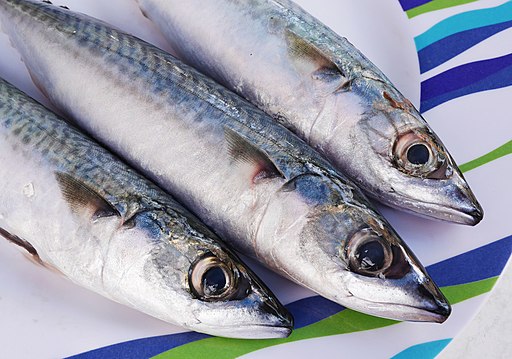Mackerel

Species Description
Atlantic mackerel Scomber scombrus
Wild.
Atlantic mackerel are small (12 to 18 inches) schooling fish, iridescent gray to greenish blue with dark, wavy stripes along their backs and whitish bellies. Atlantic mackerel are fish of the open sea, ranging widely and traveling in dense schools from Labrador to North Carolina. They can be seen rippling the water surface, attracting seabirds, porpoise, whales, and other predators.
Season
Late spring through fall, when mackerel enter estuaries and harbors in search of food, although these migrations vary from year to year.
Status
Atlantic mackerel is overfished but not subject to overfishing (Fishwatch.gov).
Regulatory Authority
Mid-Atlantic Fishery Management Council
Harvest Method
Mid-water trawl and hook and line. See the vessel and gear guide for more information.
Recreational Harvest
Mackerel are fun and easy to catch, and a great target for young and new anglers. There is no size limit, harvest limit is 20 per day per person.
Health Benefits & Risks
Atlantic mackerel contains more fat and calories than other fish, but is an excellent source of omega-3 fatty acids. Mackerel is also a great source of vitamin D and a good source of selenium, niacin, and vitamins B6 and B12. Mackerel are low in mercury.
View the 2021 US Food and Drug Administration’s fish consumption guidelines.
Buying & Preparing
Mackerel is a flavorful, oily fish best enjoyed fresh due to its high oil content, which causes it to spoil quickly. Its rich, pronounced flavor makes it a favorite for those who appreciate bold seafood tastes.
Look for firm, shiny fish with clear eyes and a fresh ocean scent. Mackerel is excellent when fried, baked, grilled, or smoked. To mellow its strong flavor, remove the dark outer bands of meat along the midline before cooking. Its oily flesh lends itself well to robust preparations like smoking or grilling with marinades.
